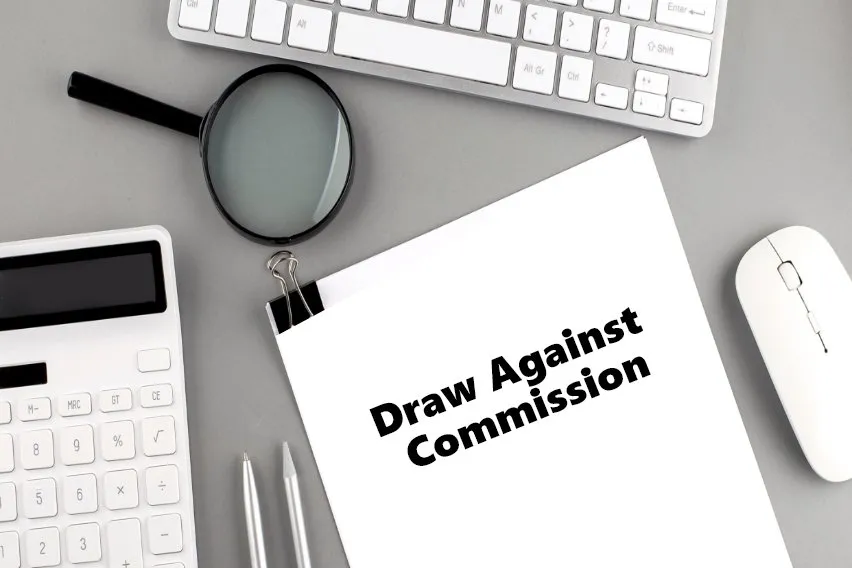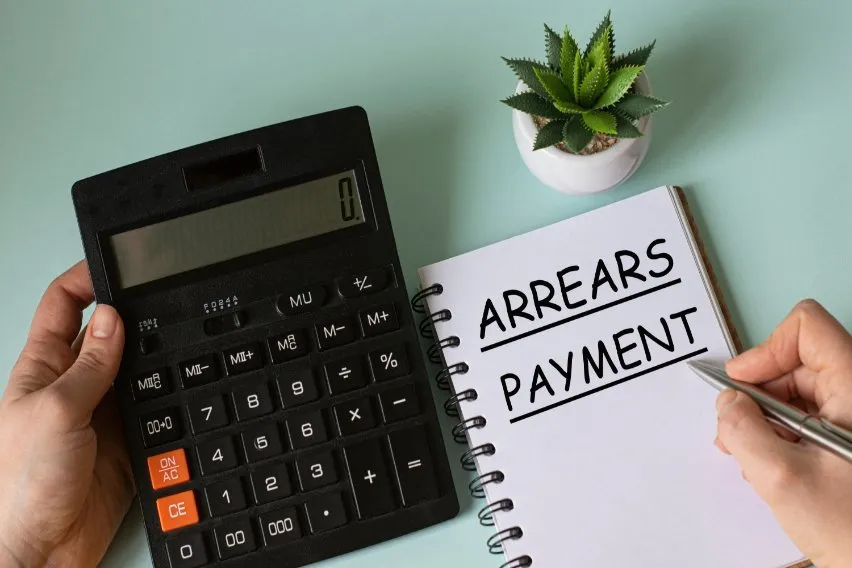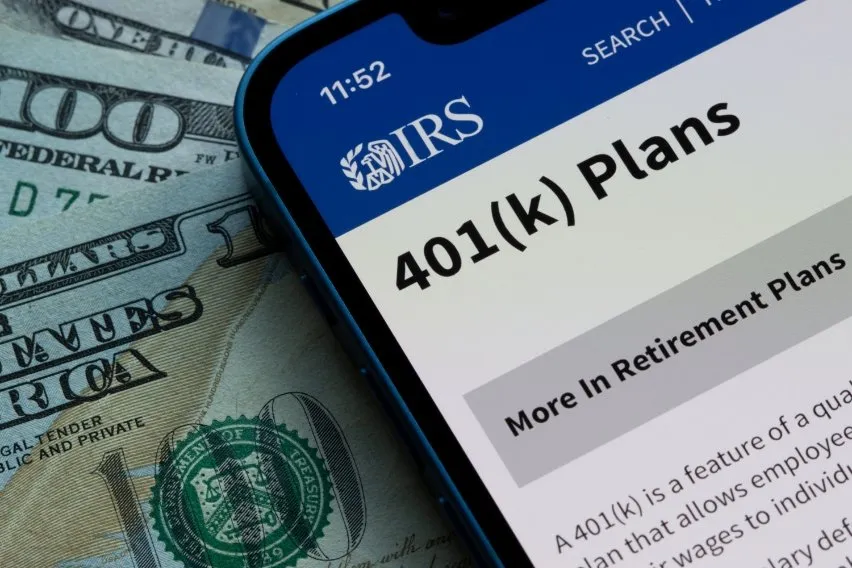Draw Against Commission: What It Is, How It Works, & Examples

For sales positions, paychecks are often determined by commission. Therefore, the right commission structure is crucial for attracting and retaining qualified sales reps while protecting the employer’s financial interests.
A draw against commission is a type of pay structure that guarantees minimum income. When used effectively, it helps motivate employees and gives them enough financial security to achieve their best performance. This article covers the different types of draws and their potential benefits and drawbacks.
Key Takeaways
- A draw against commission is a type of payment structure that offers advance compensation to workers who are paid on a commission basis.
- Employers set a fixed draw amount for reps—if the employee exceeds the draw at the end of the sales cycle, it’s subtracted from their commission.
- If a rep earns less than their draw during a sales cycle, they owe it to their employer as a debt.
- A recoverable draw means the rep must pay back the draw with commissions or carry the debt to the next pay period.
- A nonrecoverable draw means the rep keeps their draw, regardless of how much they earn in commissions.
- Draws against commission offer stability and consistency to sales reps and other commission workers.
- The downsides of draws are that they can cause employees to accumulate debt, they guarantee only a minimum salary, and the employer may have to pay to cover underperforming sales reps.
- Draws against commission are best for new hires, to help transition employees to straight commission plans, and to provide stability during uncertain financial times.
Table of Contents
- What Is a Draw Against Commission?
- Types of Draw Against Commission
- How Does a Draw Work in Sales?
- Draw Against Commission Example
- When to Use a Draw Against Commission
- Pros of Draw Against Commission
- Cons of Draw Against Commission
- Streamline Your Payroll and Commission Structures with FreshBooks Payroll
- Frequently Asked Questions
What is a Draw Against Commission?
A draw against commission is a type of compensation structure that provides a guaranteed amount of pay in advance for each paycheck. It acts similarly to a cash advance for sales representatives.
Typically, the amount of the draw is predetermined and subtracted from the commission when the representative is paid later on. The main idea behind draws against commission is to provide an incentive in the short-term, as well as to offer guaranteed financial stability for those who work entirely on commission.
Draws against commission are a good way for companies to offer more consistency to new hires or to reps ramping up work on new accounts, and it helps to stabilize income during uncertain or slow economic periods.
Types of Draw Against Commission
There are two common types of draws — recoverable and non-recoverable. Both offer their own benefits and drawbacks depending on the circumstances.
Recoverable Draw
A recoverable draw is the more prevalent of the two. It guarantees employees a stable income each pay period.
However, it must be repaid from the salesperson’s commission at the end of the determined pay cycle. If the salesperson does not meet the draw amount, they will carry this debt to the next pay cycle.
Non-Recoverable Draw
This type of draw also guarantees employees a minimum income each pay period. However, the salesperson is not required to repay the draw if they fall short of sales targets.
Since the employer doesn’t expect the employee to pay back a non-recoverable draw, they’re considered less motivating than recoverable draws. That’s why non-recoverable draws are often used as short-term incentives or to cover expenses for new hires.
How Does a Draw Work in Sales?
The employer sets a fixed amount of draw for the employee. At the end of the sales cycle, this amount is deducted from any earned commission.
If the salesperson’s commission income exceeds the draw, they will earn an additional payout. However, if they earn less commission than the draw amount, the employee owes this debt to the employer.
A commission draw is often used in industries with extended sales cycles. For example, a construction materials sales rep may have to build relationships with contractors working on projects that span many months or years. Instead of waiting for a final payout after the deal is completed, a draw guarantees a base salary throughout the cycle.
Draw Against Commissions Example
Let’s say a sales representative recently joined a company that sells design software. She is eligible for a $2,500 recoverable draw each month.
During the first month, she earned $1,500 in sales commissions. The company paid her the $1,500 in sales commission and issued $1,000 of the draw allowance. Since the sales rep didn’t hit the $2,500 sales target, she now owes the company a balance of $1,000. This loan amount carries over to the next month.
Then, suppose she closed a major deal the next pay period and earned $4,000 in sales commissions. At payout, the $1,000 draw she owed the previous month would first be recovered by the company. Then, the company would issue her an additional $500 on top of the original draw amount of $2,500. In the end, her total payout for the month would be $3,000.
But what if the draw was non-recoverable? In this case, the salesperson wouldn’t need to pay back the $1,000 draw money from the first month. In the second month, she would receive the full $4,000 in sales commissions.
When to Use a Draw Against Commission
Different industries or positions may require different types of draws against commission. Most companies use commission draws in the following situations:
- To onboard new employees: It may take time for a new salesperson to build up their sales network and start earning a commission. A draw gives a salesperson the financial backing to be productive and learn the ropes in their new position.
- To wean salespeople onto straight commission plans: As the salesperson gains experience and builds out their sales network, they may begin to earn a higher commission. Companies may shift these employees to an exclusive commission plan to incentivize performance further.
- To provide stability during unpredictable periods: A lack of sales doesn’t always indicate poor performance. Industry disruptions or external events may lead to slow periods. A draw helps teams weather these storms.
Pros of Draw Against Commission
There are many reasons why a company might want to implement a draw. These reasons include:
- It acts as a benchmark: A draw is a clear starting point for sales representatives to target. It serves as a reminder for employees of the basic expectations they should meet.
- It incentivizes sales: Employees know that they must match the draw, or they’ll accrue debt over time. On the other hand, if they exceed the draw, they can take home the extra commission.
- It provides income stability over long sales cycles or disruptions: Some periods of the year are better for sales than others. Likewise, some industries have a long sales cycle that extends the time a salesperson must wait for their commission. The draw system covers expenses and relieves pressure during the slow months.
Cons of Draw Against Commission
Sometimes, a draw is not the ideal pay structure for the employer or employee. Potential disadvantages include:
- Employees may accumulate debt: In the case of a recoverable draw, underperformance may cause the employee to accrue debt over multiple pay cycles.
- Employers will cover the cost of underperforming sales reps: If a salesperson consistently fails to earn a commission, they won’t be able to pay back the draw amount. If they leave or are terminated, the employer must cover the deficiency.
- It only guarantees a minimum salary: Draws are intended to motivate higher sales performance, so they’re often set lower than fixed salaries.
Streamline Your Payroll and Commission Structures with FreshBooks Payroll
Draws against commission are a great way to offer consistency and stability to your employees, but they also present an added administrative detail to deal with on your end.
If you’re looking for a way to simplify your payroll and commission payment process, you need a seamless, comprehensive software solution. FreshBooks payroll software is a great option, offering automated calculations, integrated reporting, and a quick, simple user interface. Our software makes it easy to manage even the most complex of commission structures, helping you to spend less time on payroll while ensuring accuracy at every step of the way. Try FreshBooks for free today!
FAQs on Draw Against Commission
Still curious about how draws against commissions work for businesses and their sales reps? Here are a few frequently asked questions—answered.
How to calculate draw against commission?
To calculate draw against commission, simply take the amount of total commission you (or your rep) will receive in a given pay period. Then, subtract the amount of the draw to calculate how much the company owes the employee.
Do you have to pay back a draw if you quit?
No, you don’t have to pay back a draw if you quit. Draws are considered wages and are vested upon the employee’s termination (whether they quit or are dismissed). This means your draw is yours to keep, even if you quit.
What is a draw against commission offer letter?
A draw against commission offer letter is used to offer an employee payment on a commission basis, allowing them to take a draw against commission for each pay period. It’s sent to prospective employees by companies to enter an agreement regarding payment.
Is a draw against commission taxable?
Yes, draws against commission are taxable. Because draws are considered income, just like a wage, salary, or the commission itself, it’s considered taxable income and must be filed and paid at tax time.
What is a nonrecoverable draw against commission?
A nonrecoverable draw against commission means that even if a sales rep’s commissions for a pay period are less than their draw for that same period, the rep gets to keep the full commission without any requirement to pay it back. It provides guaranteed payment for the rep regardless of their commissions.
What is a forgivable draw against commission?
A forgivable draw means the employee isn’t required to pay it back if they don’t meet sales targets or leave the company. In this case, the employer bears the financial loss.
Reviewed by
Michelle Payne has 15 years of experience as a Certified Public Accountant with a strong background in audit, tax, and consulting services. Michelle earned a Bachelor’s of Science and Accounting from Minnesota State University and has provided accounting support across a variety of industries, including retail, manufacturing, higher education, and professional services. She has more than five years of experience working with non-profit organizations in a finance capacity. Keep up with Michelle’s CPA career — and ultramarathoning endeavors — on LinkedIn.
RELATED ARTICLES




 Payroll for Startups: Top 7 Payroll Software for Entrepreneurs
Payroll for Startups: Top 7 Payroll Software for Entrepreneurs What is FUTA? How to Calculate it?
What is FUTA? How to Calculate it? What Does Paid in Arrears Mean?
What Does Paid in Arrears Mean? Types of 401(k) Plans: Everything You Need to Know
Types of 401(k) Plans: Everything You Need to Know Payroll Automation: Definition, Benefits & Process
Payroll Automation: Definition, Benefits & Process Payroll Audit: What It Is & How To Conduct It
Payroll Audit: What It Is & How To Conduct It